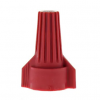Lenin1917
Well-Known Member
Thing makes
they’re not nearly that expensive, i payed $100 for mine, probably would’ve cost a good bit more for me to fuck up playing electrician lolYou don't need a fancy lighting controller with relay's that cost 100's, unless you want to fork it out. I would suggest you do, because they are pretty nice, but.. You could just run your wires into a small cheaper load center, or sub panel box, etc. Split the 240 back into 120 circuits at the box, just like the lighting controller does, but without all the added stuff.
If your room is literally right next to your main panel, I would still run to a dedicated sub panel just for the grow room equipment myself, but you could just add a few 20 amp 120v breakers going to some outlets instead. Add another new circuit or 2 with cheaper wire, if your not gonna be using that much wire or making a long run anyway...
Make sure you calculate your entire load for your house, and find how much aperage you have to spare before you go adding breakers or anything.

